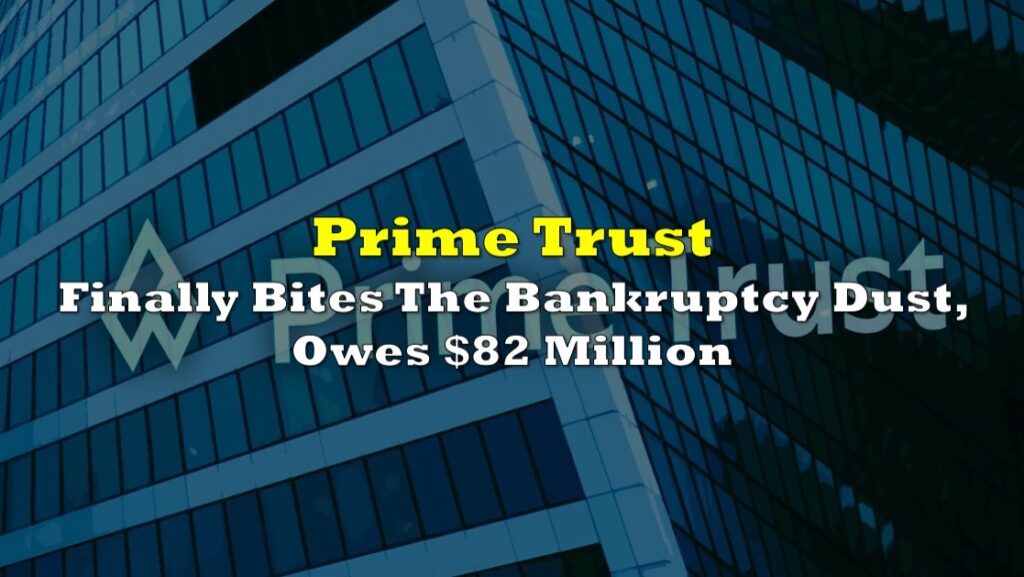Bed Bath & Beyond (NASDAQ: BBBY) cratered more than 20% this morning after the retailer finally filed for bankruptcy on Sunday.
The Union, New Jersey-based company filed for Chapter 11 bankruptcy on Sunday, months after declaring it was considering debt restructuring alternatives and had “substantial doubt” about its ability to continue operations. The filing allows it to immediately begin liquidating 360 Bed Bath & Beyond locations and 120 Buy Buy Baby stores, though the business also stated that it is looking for a buyer for part or all of its assets.
$BBBY Bed, Bath & Beyond bankruptcy court documents show that Lazard talked with approx. 60 potential investors for going-concern sale transactions, as well as postpetition financing pic.twitter.com/bPKDVuu7qk
— Tendie Baron (@TendieBaron) April 23, 2023
The closure of one of America’s most well-known home goods businesses will jeopardize the careers of thousands of employees, as well as their retirement funds and severance money. The company currently employs over 14,000 people in the United States and Puerto Rico, and one of its earliest bankruptcy demands is to pay approximately $76 million in employee wages and benefits.
“We deeply appreciate our associates, customers, partners, and the communities we serve, and we remain steadfastly determined to serve them throughout this process. We will continue working diligently to maximize value for the benefit of all stakeholders,” said CEO Sue Gove in a statement.
The company’s Bed Bath & Beyond shops and buybuy BABY stores will remain open for the time being, as will its websites, until it effectuates the closure of its retail locations. The company obtained a $240 million loan to help fund its operations while it was in bankruptcy.
The amount of delusional bagholders in $BBBY still after filing for bankruptcy claiming some magical restructuring is going to unlock value is wild. It’s dead, game over.
— Myles (@finphysnerd) April 23, 2023
According to court filings, the winddown will be quick. Bed Bath & Beyond anticipates that all remaining brick-and-mortar stores will be closed and the sites evacuated by June 30.
“We appreciate that our customers have trusted us through the most important milestones in their lives,” the company said in an email to shoppers. “Our stores are open and serving customers. However, we have initiated a process to wind down operations.”
Bed Bath & Beyond expects total net proceeds from all sales to be around $718 million, and the firm has around $1.8 billion in total funded debt obligations, according to records.
As of late November, the corporation stated it had $4.4 billion in assets and $5.2 billion in total debt, with between 25,001 and 50,000 creditors, with BNY Mellon having the largest unsecured claim of $1.18 billion. According to a BNY Mellon spokeswoman, the business is a trustee on three senior debt issues.
The retailer has been considering bankruptcy as early as the start of this year after it failed to make bond interest payments a week after its bank lenders issued a default notice due to an overdraft on its credit lines.
To liquidate or not to liquidate?
For all the specifics in the shutdown plan, the business also stated that if it attracts suitors, it may “pivot away” from shop closures.
“Bed Bath & Beyond has pulled off long shot transactions several times in the last six months, so nobody should think Bed Bath & Beyond will not be able to do so again,” the filing said.
Shoppers have retreated in recent years, and revenues have dropped. Bed Bath & Beyond was planning to file for bankruptcy earlier this year. To the surprise of many suppliers and experts, the company negotiated a convoluted eleventh-hour financing arrangement to sell its shares to hedge fund Hudson Bay Capital at the beginning of February. The transaction was to raise $360 million, falling far short of the $1 billion target, however that deal fell apart at the end of March, leading the company to turn to the capital markets for cash.
To conserve money, the company has also shrunk. It announced earlier this year that it would close approximately 400 outlets while maintaining profitable businesses in key markets.
Furthermore, the corporation attempted to save money by not paying severance to some laid-off employees at shutting stores. Bed Bath & Beyond fired 1,295 people in New Jersey last month, just days before a new state legislation that requires severance pay — one week’s pay for each year of service — for workers who lose their jobs went into effect.
Earlier in February, the company closed down its Canadian arm under the Companies Creditors Arrangement Act, also known as a CCAA filing. The filing is the Canadian equivalent of bankruptcy protection.
Following that, in early April the firm indicated it intends to conduct a reverse stock split at a ratio between 1 for 10 and for 20 to be voted by the shareholders in an annual meeting in May.
“We are seeking shareholder approval for a reverse stock split to continue raising the necessary capital to fulfill our business goals. We understand the choices we have had to make to improve our liquidity have led to speculation both about our business and our stock. We are taking the necessary steps as part of our financial strategy to sustain and grow our business,” Gove said.
But, one thing the retailer hasn’t lost is strong, loyal shareholders. This, despite the fact that the company has already lost 98% of its market cap from a year ago, losing 87% of it just this year.
Hah, to add insult to injury, $BBBY is now BLAMING the baggies. pic.twitter.com/Uluz3WKBPa
— Keubiko🇺🇦 (@Keubiko) April 23, 2023
Which scumbag lawyer is going to step up to the plate and scalp $500K to $1M in crowdsourced fees from $BBBY BBBagholders, agitating for an “equity committee” ??? pic.twitter.com/4kgST4yu3r
— Keubiko🇺🇦 (@Keubiko) April 23, 2023
Bed Bath & Beyond last traded at $0.23 on the Nasdaq.
Information for this briefing was found via CNN, Bloomberg, and the sources mentioned. The author has no securities or affiliations related to this organization. Not a recommendation to buy or sell. Always do additional research and consult a professional before purchasing a security. The author holds no licenses.









